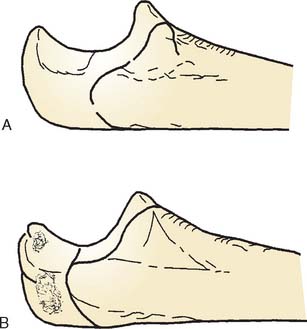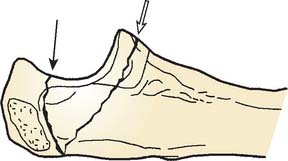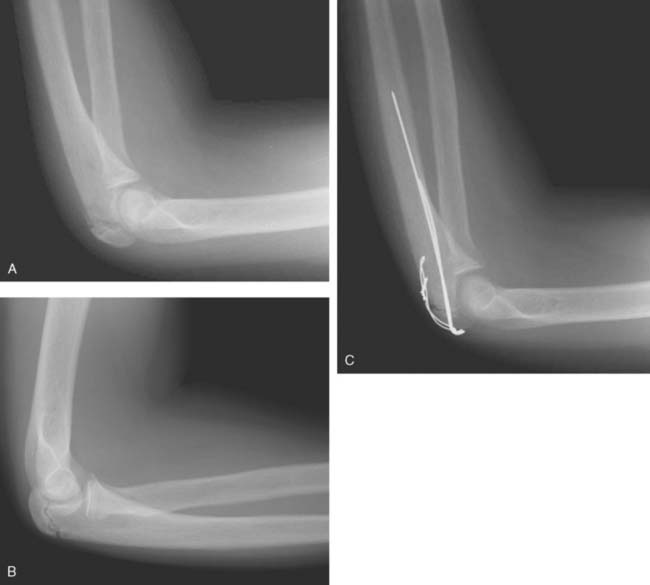CHAPTER 18 Proximal Ulnar Fractures in Children
INTRODUCTION
Proximal ulnar fractures in children and adolescents are uncommon, accounting for between 4% and 7% of pediatric and adolescent elbow fractures.1,2,6,8 As a result, (1) they are often completely missed, (2) the variation in growth centers makes the radiographic interpretation confusing, (3) the precise fracture line is often not appreciated, and (4) the potential for a poor outcome occurs if the displacement is not appreciated. In this chapter, we review fractures of the physis, metaphysis, and coronoid (Table 18-1).
TABLE 18-1 Types of Proximal Ulnar Fracture in the Pediatric Age Group
| Type | Incidence |
|---|---|
| Apophyseal (physeal, epiphyseal) | Very rare |
| Metaphyseal | 5% of elbow fractures |
| Coronoid | Less than 1% of elbow fractures |
GROWTH AND DEVELOPMENT
As noted in Chapter 1, at birth none of the articular elements of the ulna, including the coronoid and olecranon, are ossified. At age 9, the secondary center of ossification appears at the olecranon (Fig. 18-1). The ossification center may be bipartite and eccentric, and as the proximal ulna grows, the growth plate orientation alters from transverse to oblique. Closure of the physis begins at the articular surface and progresses toward the extensor surface of the bone. Just before fusion of the growth plate, the metaphyseal bone develops a sclerotic margin and may be widely separated from the apophysis, resembling a fracture. These vagaries can make it difficult to recognize a fracture of the olecranon in a child, and comparative views of the opposite side are often valuable.2 Although a secondary center may appear in the olecranon tip, there is no secondary ossification center of the coronoid. This helps explain the fracture pattern observed in the proximal ulna of the various age groups (Fig. 18-2).
APOPHYSEAL FRACTURE
Apophyseal fractures are extremely rare. Reviewing his experience and that of the literature up to 1991, Wilkins17 identified only 16 such cases. As a matter of fact, a review of the literature of the less rare olecranon or proximal ulnar fracture resulted in the identification of 192 cases but no mention of a fracture of the apophysis.17
The fracture may or may not include the coronoid as the fracture line passes between the growth center and the proximal ulna (see Fig. 18-2). This is because the coronoid does not develop from a separate growth center; thus, the fracture line in this rarest of fractures may be rather variable (Fig. 18-3).
METAPHYSEAL FRACTURE
Metaphyseal fractures, although more common than fracture of the apophysis, still account for only approximately 5% of elbow injuries.3,11,15 Wilkins17 identified only 230 cases among 4,684 proximal ulnar fractures reported in the child before 1991. It appears that there is a biphasic frequency by age, with the greatest early frequency occurring between 5 and 6 years12










